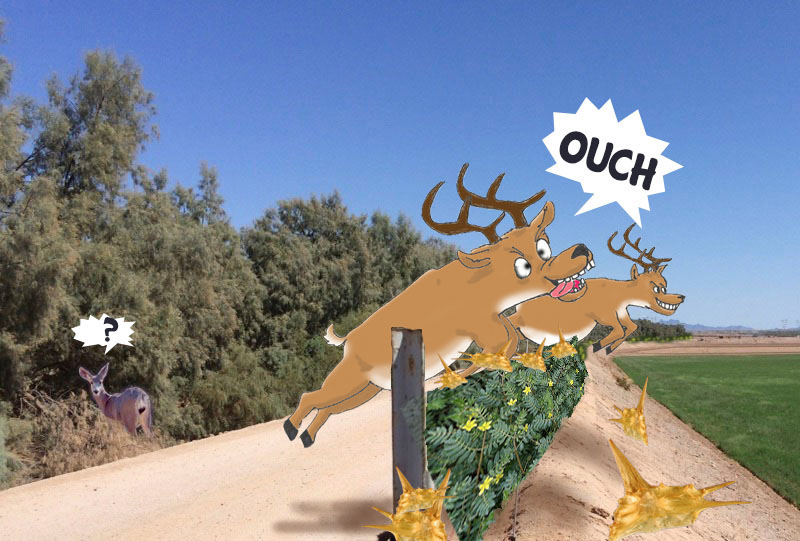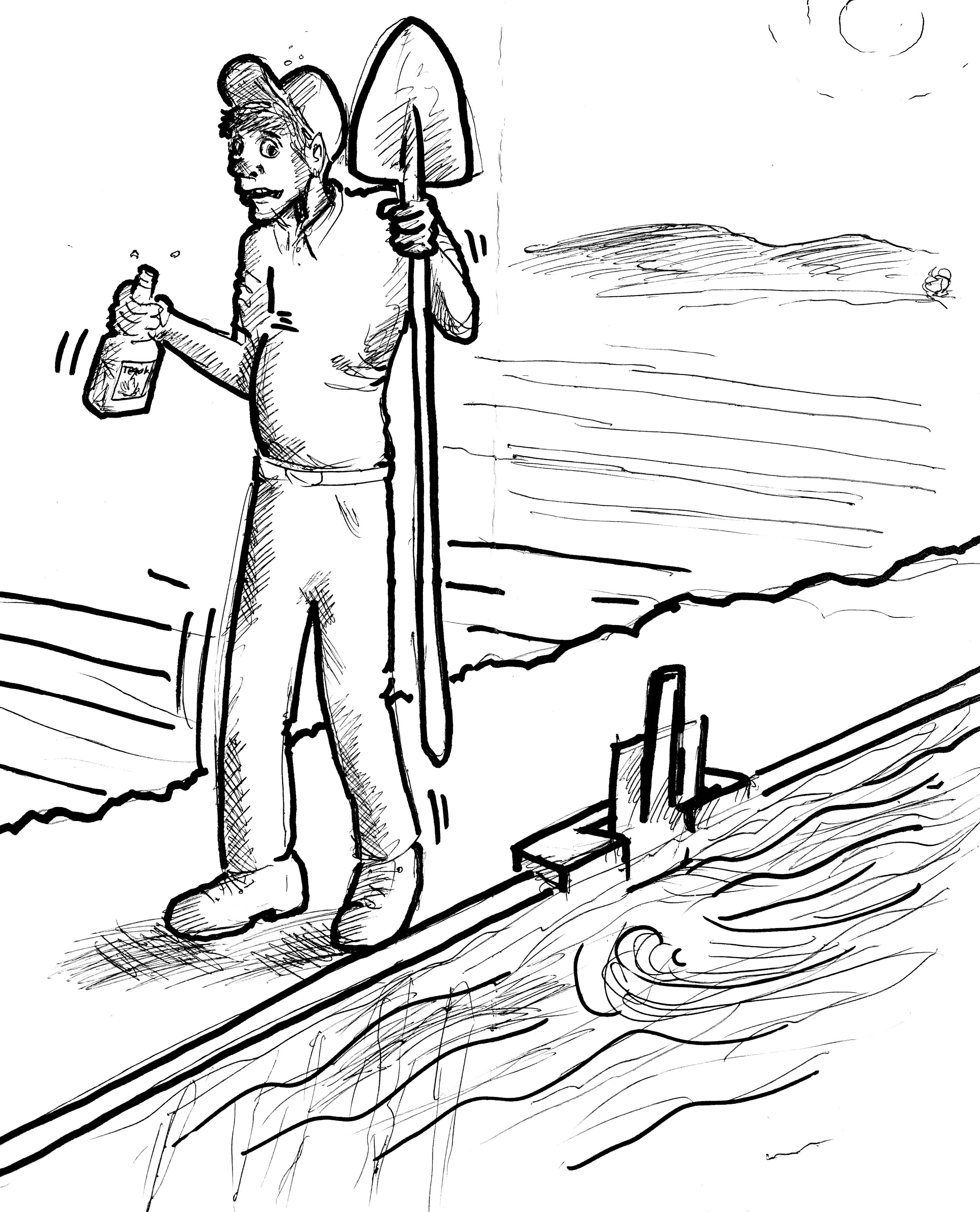
|
|
|
|

|
|||
|
|
|||
|
|
|||
If you think that you are seeing more puncturevine this year, you are right, they have sprung up everywhere. Although not usually found in vegetable fields, it can be a serious problem in orchards, turf and on ditch banks. The proliferation of this weed this year is likely the result of the rainfall we have had this summer. It is a summer annual and will die from frost but the seed heads are most troublesome now that they have matured. Puncturevine (Tribulus terrestris) is in the caltrop family and has several common names including goatheads, Mexican sandbur, caltrop and many other names that cannot be printed here. It is appropriately named because of the hard spike like seed pods that can puncture tires injure animal feet and mouths. It commonly has four spikes that are arranged so that when three of the spikes are on the ground, the fourth will point upward. It can grow in dry areas but thrives in wet summers. The seed heads that you see now will germinate in the pod next spring. One plant can form a dense mat running 20 feet or more and produce up to 5000 seeds. Seeds can survive around 5 years. The most common way that it is controlled in residential areas is by pulling and hoeing. In large landscaped parks, schoolyards etc. herbicides can be useful. Triluralin and Balan applied in the spring prior to emergence will provide partial but not complete control. After it is established the systemic growth regulators like 2,4-D, dicamba and others will work but they will injure other broadleaf plants if they come in contact. Biological control of puncturevine is possible but it might take up to two years to work. There are two weevils: A seed weevil (Miclarinus lareynil) and a stem weevil (M.lypriformis) that are specific to puncturevine The seed weevil deposits its eggs in the immature seed head and feed on and destroy the seed before they pupate. The stem weevil lays its eggs in the stems, branches and root crown. Both of them work well together but they are a little difficult to establish and maintain. Our first weed specialist, Stan Heatman released some of these in the early 1960’s in the Wellton area and they were effective for many years. John Palumbo and I released some about 20 years ago but they are obviously gone now. They probably need to be rereleased every couple of years. We are working on getting more. |
|||
| Back | |||
|
For questions or comments on any of the topics please contact Marco Pena at the Yuma Agricultural Center.
|
|||
|
Home |
Cotton | Veggies |
Forages | Grains
| Citrus |
Crop x Crop Insects | Diseases| Weeds | Pesticides | Economics | News | Weather | Research | Photos | Contacts | General Info. Copyright © 2001 University of Arizona, College of Agriculture and Life Sciences Webmaster: Al Fournier (acis@ag.arizona.edu) |
|||


